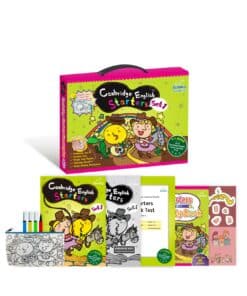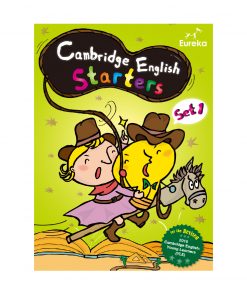Vocabulary and Phonics Games for Primary Schools
Drill Orchestra
Contributed by: Veronica
How to play:
1. Students repeat the word over and over again.
2. When you bring the flashcard low or higher they must change how they say it.
Can choose any one of these or your own, just demonstrate for them! You can switch it up as you go, if they’re getting too noisy for example, switch it to emotions.

Differentiation: Choral speaking/group drilling so no differentiation (*BUT if you hear students mispronouncing something, stop and correct any mistakes or they will be drilling their mistakes!)
Medium: Paragraph
Hard: Students have a sheet of questions. and must scan the short paragraph of text for the answer
Materials: Flashcards
Suggested age: P1 – P3
Time needed: Flexible
Especially good for: Getting the class to focus their energy/get back on task if they’re distracted
Stand Up Sit Down
Contributed by: Veronica
How to play:
1. Set 4 chairs in a row facing the class.
2. Invite 4 students to sit in the chairs, and give them each a vocab word or letter to hold onto (they should look at the card, but then hold it facing out so the class can see).
3. Teacher calls out a word. When the student holding that card hears it, they must stand up, repeat it, sit down. If phonics, if they hear their sound in the word that is said they stand up, sit down etc.
4. After each word has been called a few times, change players. TIP: start slow then speed up!
Differentiation:
(+) Strong students can call out the words
(-) Weak students can be supported by the class (students will usually start to point at the right kid if they did not stand up on their own)
Note: For older groups, play elimination to amp up the challenge of how long someone can sit there without messing up. If you have students who DON’T want to sit there, so if they get it right they get to leave, if they get it wrong they have to say. This means weaker students get more time to practice but then get the reward of leaving when they get it right.
Materials: Individual whiteboards/pieces of paper with the letter OR flashcards
Suggested age: P1 – P6
Time needed: Flexible
Especially good for: Really repetitive drilling without the kids realizing ; controlled high energy
What is Number 3?
Contributed by: Veronica
How to play:
1. Stick multiple flashcards to the whiteboard and add numbers underneath them.
OR (older groups)
1. Tell students to number the vocabulary words on their worksheet, making sure everyone puts the same number.
2. Call out numbers. Students must reply by saying which vocabulary word it is.
Differentiation: Choral activity, just pay attention to mistakes
Materials: Flashcards & blue tack & whiteboard or chalkboard OR individual worksheets with vocabulary list
Suggested age: P1 – P6
Time needed: Flexible
Especially good for: Higher ability classes
What’s Missing?
Contributed by: Veronica
How to play:
1. Stick flashcards on the board. 6-8 cards for P1-P3.
2. Tell students to look at the back of the room (or close their eyes but then they cheat).
3. Remove one of the cards and hide it.
4. Ask them to look again and tell you what’s missing.
5. Invite students up to be the ones to choose which flashcard to remove.
Differentiation: n/a
Materials: Flashcards & blue tack
Suggested age: P1 – P3
Time needed: Flexible
Especially good for: Higher order thinking
Slap It!
Contributed by: Veronica
How to play:
1. Stick flashcards on the board.
2. Give 2 students a swatter (popsicle stick, their hand, fly swatter).
3. Call out a word and they have to hit it on the board.
Note: if older, you can make them stand 4 steps back so they need to really move forward before hitting it.
Differentiation:
(+) Strong students can call out the words
(-) Weaker students can be paired together so that they don’t just rely on the strong students. Then you can go a bit slower/repeat one target word more times that you want them to focus on.
Materials: Flashcards & blue tack
Suggested age: P1 – P6
Time needed: Flexible
Especially good for: Repetitive drilling in a fun way
Drive – Through Blending
Contributed by: Veronica
How to play:
1. Write sounds in a fun path on the board.
2. Use a toy car and park at each sound. Students should say the sound. *Note, this is using synthetic phonics so the sound should be accurate to it’s pronunciation in the word (i.e saying ‘l’ not ‘ell’ or “lah lah lah”)
3. Drive the car faster to blend the word together.
Reference: https://www.youtube.com/watch?v=-nkwUtPc_lQ
Differentiation: Choral activity, just pay attention to mistakes
Materials: White board or chalk board & toy car
Suggested age: P1 – P2
Time needed: Flexible
Especially good for: Synthetic phonics (jolly phonics)
Pairs
Contributed by: Katie
How to play:
1. Recap vocabulary flashcards then place 2 sets of flashcards facedown on a whiteboard.
2. Invite students one by one to come up and turn over 2 flashcards. Show to the whole class and they must say the word.
3. If the pair does not match turn them over. If the pair match leave them face up and continue the game.
4. Continue until all pairs are found.
Differentiation: if student can not say the word, ask them what the first letter is. Teacher can then say the word for them to copy.
Materials: Up to 6 words work well
Suggested age: P1 – P2
Time needed: Flexible
Especially good for: Revision, speaking
Word Scramble
Contributed by: Joe
How to play:
1. Write 3-6 letters on the board. (i.e. S, I, T, C, A)
2. In groups students try to make as many words as they can with the letters. i.e. cat, sit, its, at)
3. Most words wins!
Differentiation:
(+) Add in ‘harder’ letters (v, w, x, m, b)
(-) Use paper cutouts with the letters for manipulation of the letters so that weaker kids can “discover” words by chance when the try different combinations (helpful for visual learners, too)
Materials: Chalkboard
Suggested age: P1 – P6
Time needed: Flexible
Especially good for: Spelling, higher order thinking, Scrabble teams
Cross the River
Contributed by: Veronica
How to play: Very famous game. Look online for variations on how to play.
1. Lay a row of flashcards on the ground. Add some pictures of sharks/alligators on the sides to make it more intense (CAREFUL: some kids believe it too intensely and become scared. look out for this!).
2. Students must step on the flashcards and say the words to cross from one side to the other.
3. If students are confident enough, you can tease them by pretending the sharks are coming.
TIP : This game doesn’t have to be isolated words! Can be great for extended speaking practice. For example, self introductions. First card: “My name is ____” ; Second card: “I am ___ years old” etc. By the end they’ve practiced saying 4- 5 sentences.
Differentiation:
(+) Encourage them to go faster, add extra cards for their turn, or hide the written form of the word on the flashcard.
(-) Help them to remember, don’t tease about the sharks coming. Turn to the class to help for words they’ve forgotten, “Can we help Julia? What is this one?”, then allow the individual to repeat after the class has said it and move on.
Materials: Flashcards, images of sharks (optional)
Suggested age: P1 – P3
Time needed: Flexible
Especially good for: Fixing individual pronunciation problems & Extended speaking
3 Hints Quiz
Contributed by: Veronica
How to play:
1. One student may choose any word from the recent vocabulary.
2. They must think of 3 hints to give for that word.
3. Other students must guess what the word is.
NOTE: Use nouns/tangible objects for younger students, abstract words are okay for more advanced and older students.
Differentiation: Give students time to plan their clues, work in groups, provide sentence structures
Materials: Vocabulary should remain visible in the room, either in textbook, worksheet, on the board, ppt, etc.
Suggested age: P1 – P6
Time needed: Flexible
Especially good for: Units on riddles
A-Z Brainstorm
Contributed by: Veronica
How to play:
1. Print out a table with 26 boxes. Each box should have one letter of the alphabet.
2. Play in teams, as a class, or individually
3. Assign a topic and a time limit.
4. Before the time runs out, students must race to fill in every box on the table with word(s) related to the topic. Goal can either be to think of one word per letter, or the most number of words total.
Differentiation:
Add an extra challenge – for words that are a bit of a stretch from the topic, ask students to justify in English to explain their point. If the argumentation is sound, they get it!
For example – I had a lower ability P6 student group write “bed” when the theme was “travel”. However, they justified that when you travel you are away from your own bed, and have to sleep in a hotel or other accommodations.
Materials: A-Z chart
Suggested age: P3 – P6
Time needed: 20 minutes
Especially good for: Consolidation, speaking, vocabulary building
Minimal Pairs Bingo
Contributed by: Veronica
How to play:
1. Put minimal pairs words on bingo sheets using an online bingo sheet generator. (will randomize which words show up on their paper)
2. Teacher calls out words, and students must listen carefully to ensure they are catching the right word)
3. When they have a row shout BINGO.
4. Winner can be the person reading out the words, or helping their classmates make sure they mark the right minimal pair.
Differentiation: n/a
Materials: Bingo sheets 1 per student ; Markers – can be bingo stamper, coloured pencil, or paperclips/confetti so that the bingo sheets can be reused for multiple groups
Suggested age: P1 – P3
Time needed: 20 minutes
Especially good for: Big groups, consolidation after a lesson on minimal pairs
Connect 4
Contributed by: Stacey
How to play:
1. Select 2 students to begin, or divide the class into 2 teams (red and yellow)
2. Students must first read the correct vocabulary word or phonics sound, then claim the location
3. If incorrect, the next team has an opportunity to steal a location.
4. Alternate between players/teams until four consecutive slots have been secured (horizontally, vertically, or diagonally).
Differentiation: Team play. Students work together to strategize the best location and word.
Materials: Phonics Connect 4 PPT
Suggested age: P3 – P6
Time needed: Flexible
Especially good for: Revision, reading
Download the PPT for FREE




